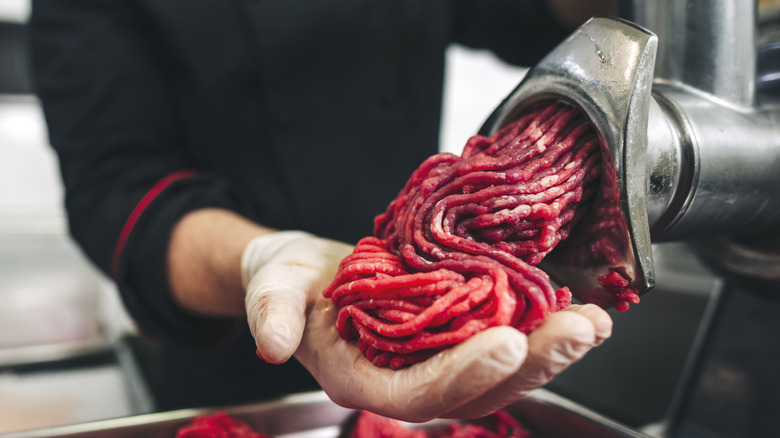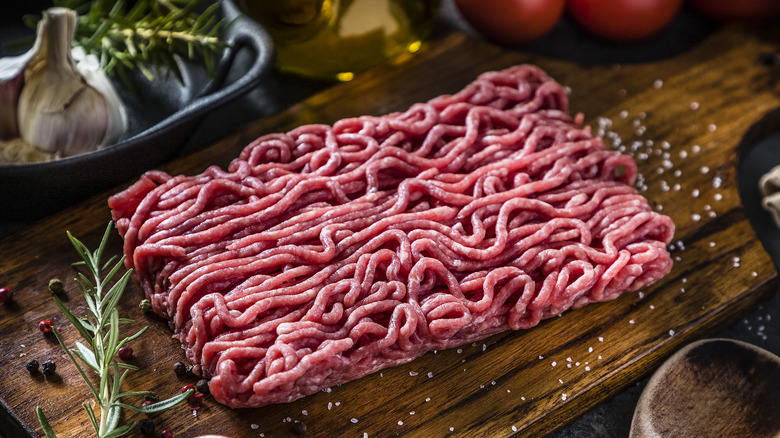How Ground Meat Is Actually Made
Ground meat is a versatile food food. Whether you choose chicken, turkey, pork, lamb, or beef, you can use it to make hamburgers, meatballs, meatloaf, sloppy joes, and countless other dishes. It is also typically more affordable and relatively quick and easy to cook. Best of all, people love it. For many, the blend of savory juices that results when ground meat is cooked produces irresistible results. But how is this tantalizing protein made?
The main thing you should understand about ground meat is that it is a process, not a cut. Technically, you can toss virtually anything in a meat grinder, whether trimmings or prime cuts, to produce ground meat. However, not every cut is suitable. The better the fat-to-muscle ratio (roughly 80% to 20% fat), the better it will be for grinding. This is why filet mignon makes what many may consider horrible hamburgers; There's not enough fat content.
Where does ground meat come from?
Typically, the ground meat you purchase is made from trimmings. This is because the primal cuts, such as chicken breasts and top sirloin, may require more processing, so they can (and sometimes must) be sold for higher prices.
In the store, a package labeled "ground chicken" or "ground turkey" is sourced from dark and light meat. Some skin and fat are included in the mix to get the desired fat ratio. Ground pork, on the other hand, is usually made from the pork shoulder with some trimmed ends of the loin added. You can get sausage-grade ground pork, which contains up to 30% fat, or pay a little more for a leaner option.
Ground beef contains ground-up meat trimmings. These are not necessarily inferior cuts of meat. They are just too small to be sold individually. Whether the package is labeled "ground beef" or "ground chuck," the consumer knows precisely where the meat comes from.

